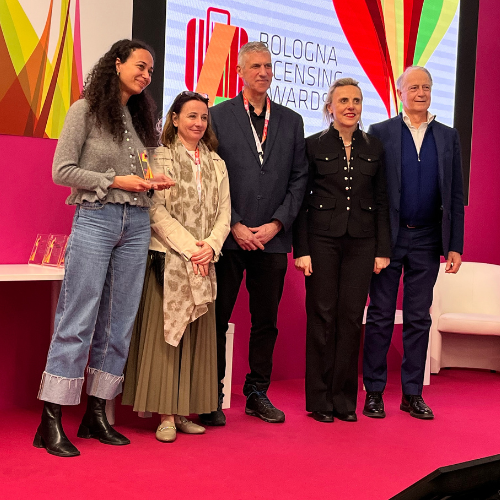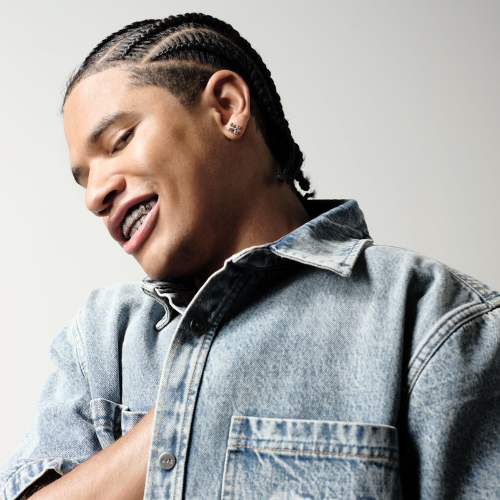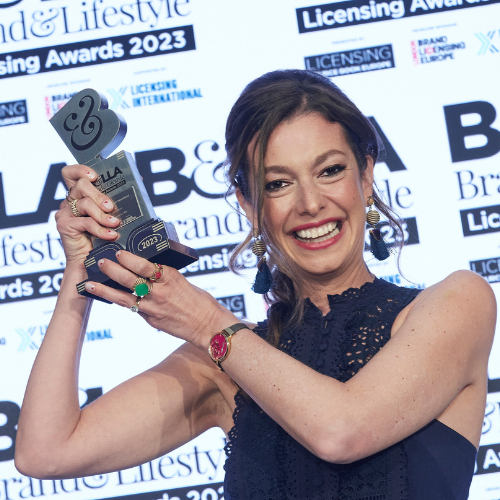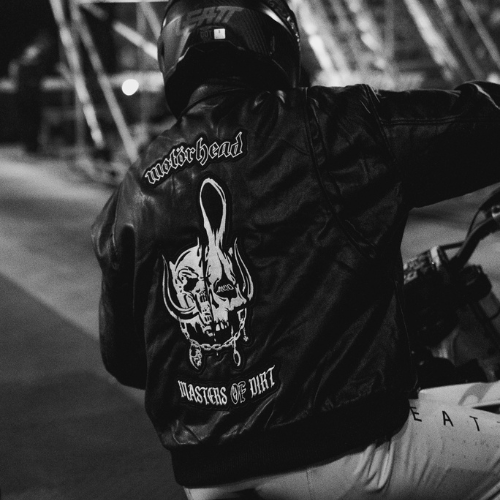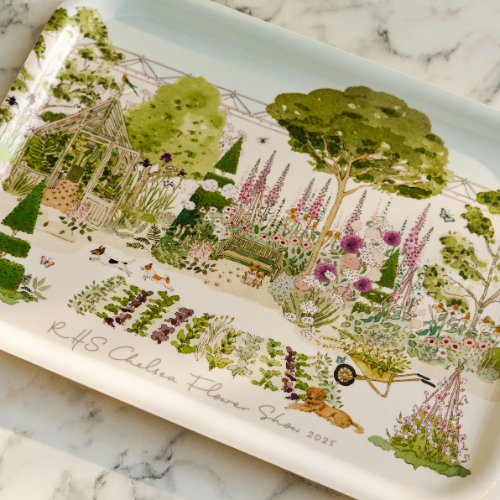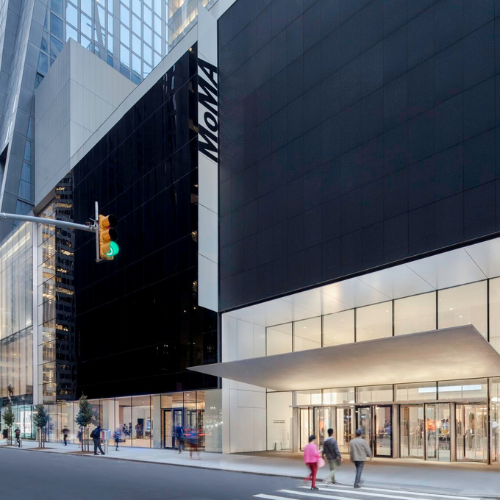With the Tour de France reaching its conclusion this weekend, SGLP’s Simon Gresswell takes us behind the scenes of one of the stages.
Ever wondered what it’s like to ride a stage of the Tour de France?
Well, ride it I did, but in an official Skoda race car.
I was very kindly invited by the Amaury Sports Organisation (ASO) – the organiser of the Tour de France – to a behind the scenes look at the fourth stage of the Tour, between Dax and Nogaro. Dan Grant, licensing director at Danilo, a keen cyclist as many of you will know, also accepted the invite, so we set off from St Pancras for what must be a bucket list experience.
On arrival in Dax around 10pm the evening before, in the best traditions of sporting events, marketing comms reminders were everywhere, from the station pillars, to traffic bollards, street lamps to road signs, as well as excellent bespoke displays in shops, hotels, bars and restos, as well as a very big Fan Village (in relation to the size of the town, only 20k population), including partner booths, experiences, an official boutique and of course plenty of F&B… it’s the Tour de France after all.
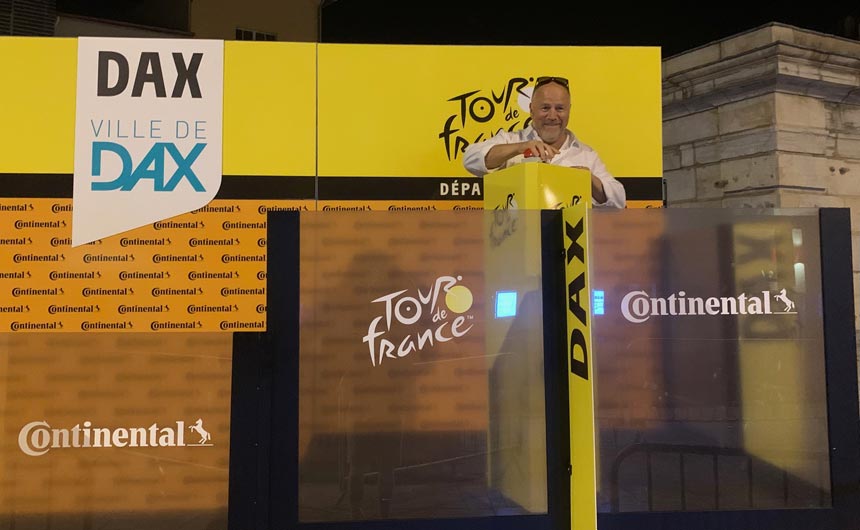
The iconic winners’/leaders’ colours (yellow, green, white and red polka dot) adorn every public building with mini-jersey bunting hanging across all streets and squares – no wonder with the Tour returning to Dax for the first time since 2006 – with similarly coloured bikes hanging from buildings, balconies and wires akin to what we see so often in sports with spidercams, in the centre of town.
The countdown clock in town by the famous Fontaine Chaude (the pre-start point, after which there is 7km of warm up until the actual race start) reads ‘J -1’ (The Day minus 1), as we grab some late tucker under the hanging yellow, green, white and red polka dot decorations.
And it’s only one day that this ‘yellow circus’ comes to town. The crack ops team set up the Fan Village and the Paddock (for all the teams buses, cars, bikes and support crews) around 8-9pm the night before and as we discovered when we came back at 8.30pm the following evening everything is gone after – and I mean absolutely everything: official shops, partner booths, big screens, presentations stages, concessions and every single last piece of litter is gone! As an exercise in event activation and execution, this is on a par with the best I’ve seen anywhere.
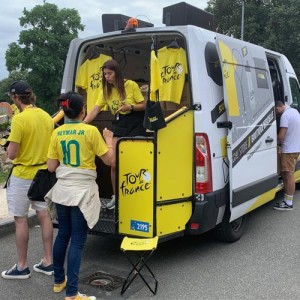 By 8am on race day morning the ‘activations’ have already started along the start and exit route in the town centre. 600 student volunteers are giving out Basque-red caps, cycling caps and bandanas to commemorate the town’s participation in the Tour, alongside those from key partners Leclerc (which is the nominated ‘owner/partner’ of the red polka dot, King of the Mountains jersey pattern).
By 8am on race day morning the ‘activations’ have already started along the start and exit route in the town centre. 600 student volunteers are giving out Basque-red caps, cycling caps and bandanas to commemorate the town’s participation in the Tour, alongside those from key partners Leclerc (which is the nominated ‘owner/partner’ of the red polka dot, King of the Mountains jersey pattern).
Skoda recycled material bucket hats and tote bags, in a suitably lighter shade of the corporate green colour are prominent too and Credit Lyonnais’s distinctive yellow, cover caps, bucket hats and bags.
Noticeably, flags and other such disposable fan gifts are absent, which I’m sure is part of the ASO’s overall environmental and sustainability plans to minimise throw away paraphernalia around the event.
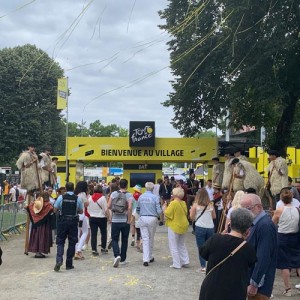 A quick couple of photos and a cup of Senseo (sponsor) coffee in the Fan Village, then we meet our driver Aurelien and line up to watch the ‘caravane publicitaire’, a half-hour parade of fun-themed sponsors vehicles, with more of the students harnessed to platforms, hurling samples and trinkets out into the swarms of fans that line the route… and that goes on all the way along the 181km route! This sample-showering caravan, distributing 12-15m samples across the 21 stages, leaves two hours before the riders and covers the whole length of the course, pumping out music from onboard speakers and with brand hosts, mic’d up to interact with the crowd. It’s an iconic part of the Tour, indicating the peloton is on its way soon(ish) and meeting and greeting the adoring fans in a vital celebratory interaction, which you rarely see on the TV coverage.
A quick couple of photos and a cup of Senseo (sponsor) coffee in the Fan Village, then we meet our driver Aurelien and line up to watch the ‘caravane publicitaire’, a half-hour parade of fun-themed sponsors vehicles, with more of the students harnessed to platforms, hurling samples and trinkets out into the swarms of fans that line the route… and that goes on all the way along the 181km route! This sample-showering caravan, distributing 12-15m samples across the 21 stages, leaves two hours before the riders and covers the whole length of the course, pumping out music from onboard speakers and with brand hosts, mic’d up to interact with the crowd. It’s an iconic part of the Tour, indicating the peloton is on its way soon(ish) and meeting and greeting the adoring fans in a vital celebratory interaction, which you rarely see on the TV coverage.
We head into the ‘Paddock’, where all team buses and support vehicles (all teams have four cars with spare bikes for all eight riders, with only two cars allowed to follow their teams on each stage) allow us to see the bikes and the occasional Team Principal or Rider being interviewed, up close. The bikes vary in value from £6-16k each. Riders who have won a stage at any time during their Tour de France career, have number tag with a medal symbol on, showing the number of wins in the middle. Cav’s still remains at 34 after a sixth, a fifth and an agonising second place in Bordeaux, followed by an incredibly unlucky fall and injury in Stage 8.
The other fascinating behind the scenes details included seeing the Box to Box production teams setting up cameras, on selected bikes and on the front dash of several team cars. If you haven’t yet watched the Netflix series, Tour de France – Unchained, I can highly recommend it, especially for any hardened MAMIL or indeed any sports fan wishing to really understand the Tour, especially the team tactics, the pain and the endurance of pain that the riders go through, not to mention seeing just how important to France and to cycling, the Tour really is. You don’t go far along the route without seeing a VIVE LE TOUR DE FRANCE banner.
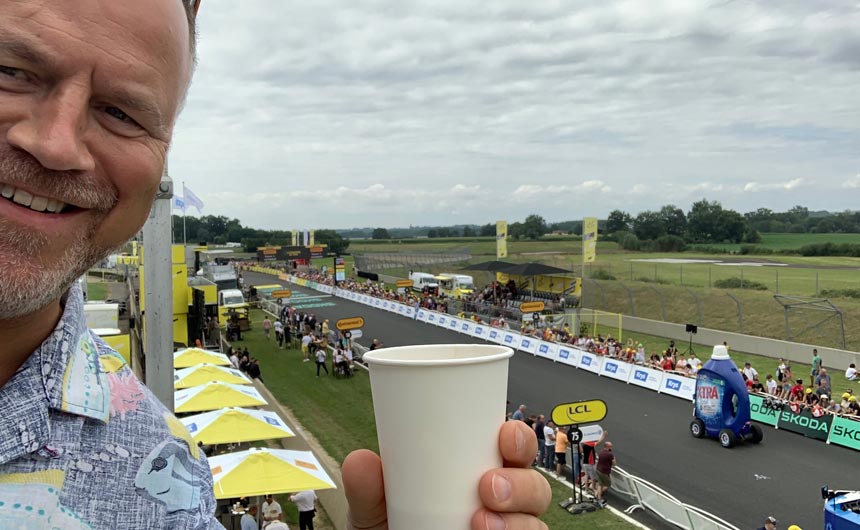
We waved like kings along the entire route, as the fans greet every official race vehicle like winners, passing garden, field, street and farm vehicle parties of all kinds and across all generations.
We manage to catch up and overtake (weave through) the four x mobile Official Merch vans and the ‘caravane publicitaire’ and install ourselves in a high vantage point with a glass of what France does best to watch the frantic 800m final sprint along the home straight of the motor-racing circuit at Nogaro.
And then just like that, it’s all over… until the next day, when everyone involved does it all over again. Just incredible.
If you ever get the chance, don’t hesitate, just go to the Tour de France.












